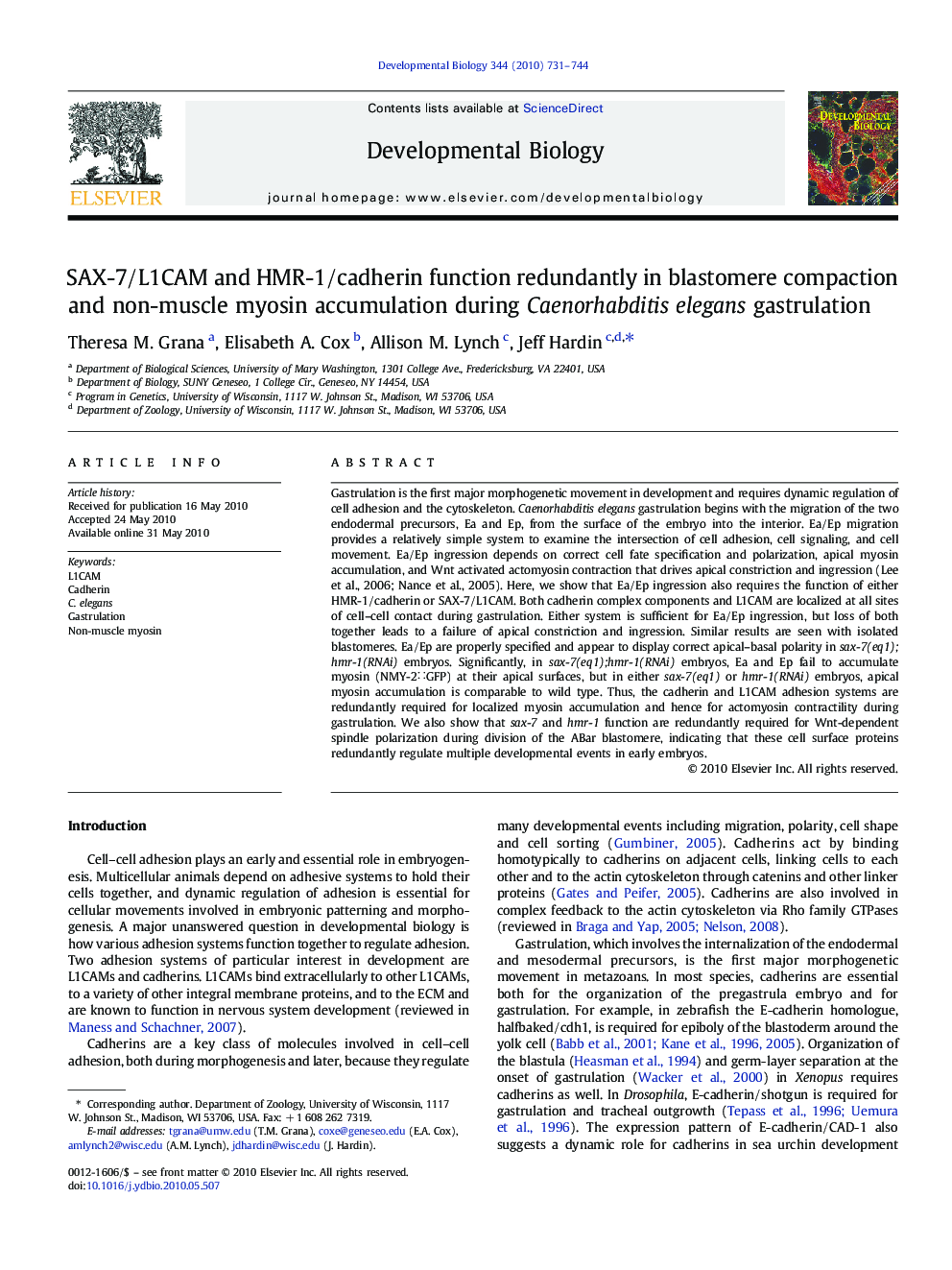| Article ID | Journal | Published Year | Pages | File Type |
|---|---|---|---|---|
| 2173858 | Developmental Biology | 2010 | 14 Pages |
Gastrulation is the first major morphogenetic movement in development and requires dynamic regulation of cell adhesion and the cytoskeleton. Caenorhabditis elegans gastrulation begins with the migration of the two endodermal precursors, Ea and Ep, from the surface of the embryo into the interior. Ea/Ep migration provides a relatively simple system to examine the intersection of cell adhesion, cell signaling, and cell movement. Ea/Ep ingression depends on correct cell fate specification and polarization, apical myosin accumulation, and Wnt activated actomyosin contraction that drives apical constriction and ingression (Lee et al., 2006; Nance et al., 2005). Here, we show that Ea/Ep ingression also requires the function of either HMR-1/cadherin or SAX-7/L1CAM. Both cadherin complex components and L1CAM are localized at all sites of cell–cell contact during gastrulation. Either system is sufficient for Ea/Ep ingression, but loss of both together leads to a failure of apical constriction and ingression. Similar results are seen with isolated blastomeres. Ea/Ep are properly specified and appear to display correct apical–basal polarity in sax-7(eq1);hmr-1(RNAi) embryos. Significantly, in sax-7(eq1);hmr-1(RNAi) embryos, Ea and Ep fail to accumulate myosin (NMY-2∷GFP) at their apical surfaces, but in either sax-7(eq1) or hmr-1(RNAi) embryos, apical myosin accumulation is comparable to wild type. Thus, the cadherin and L1CAM adhesion systems are redundantly required for localized myosin accumulation and hence for actomyosin contractility during gastrulation. We also show that sax-7 and hmr-1 function are redundantly required for Wnt-dependent spindle polarization during division of the ABar blastomere, indicating that these cell surface proteins redundantly regulate multiple developmental events in early embryos.
